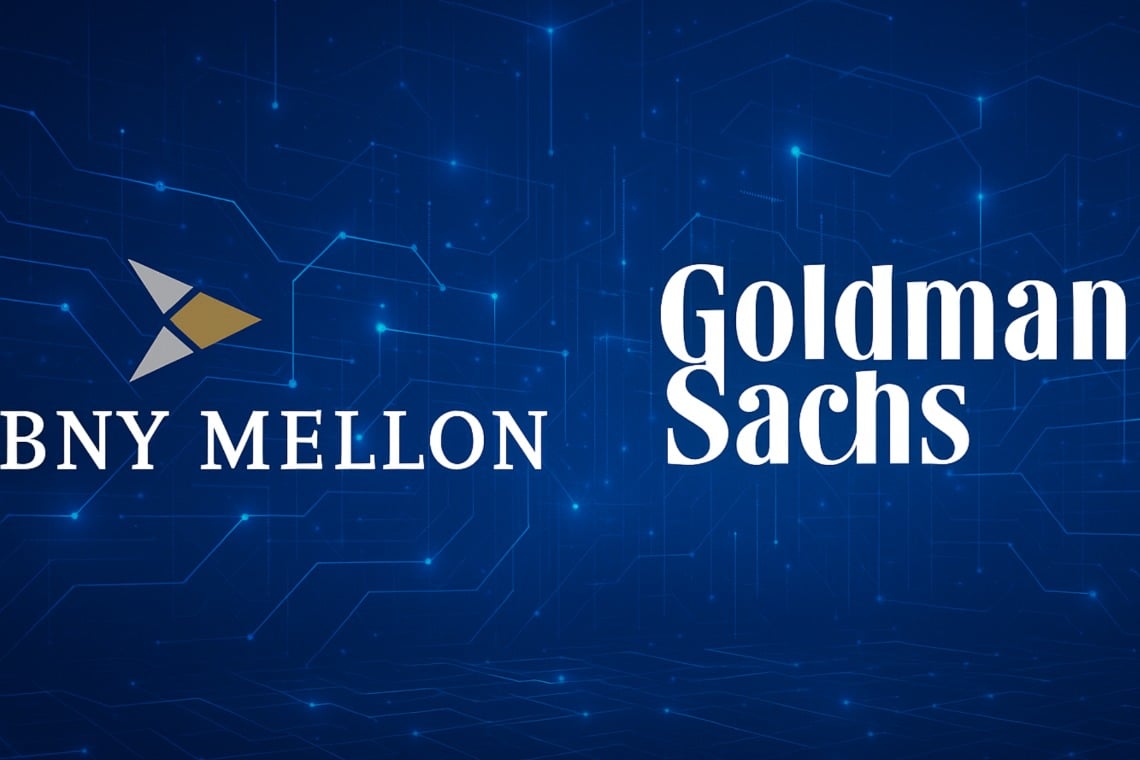Discover how tokenization on blockchain transforms financial assets

BNY Mellon and Goldman Sachs inaugurate a new era for the tokenization of financial assets, opening the doors to a flexible and programmable management of institutional capital on a global scale.
What does the tokenization of assets mean for global finance?
The tokenization of digital assets represents one of the most anticipated revolutions in the financial sector. With the project launched by BNY Mellon and Goldman Sachs, the shares of money market funds (MMF) are issued in the form of tokens on the blockchain GS DAP, the proprietary platform of Goldman Sachs Digital Assets.
Thanks to this innovation, clients can use BNY Mellon’s LiquidityDirect to access, subscribe, and redeem MMF shares digitally — in a faster, safer, and more transparent way. For the first time in the United States, the management of shares occurs seamlessly between traditional infrastructures and the institutional blockchain universe.
How does the BNY Mellon and Goldman Sachs platform work?
The new system revolves around a close collaboration between the two banks and other giants in the sector, such as Blackrock, Fidelity Investments, Federated Hermes, BNY Investments Dreyfus, and Goldman Sachs Asset Management. BNY Mellon continues to handle official custody and settlement operations, ensuring compliance with the current regulations.
On the LiquidityDirect platform, institutional clients obtain mirror tokens of MMF shares through GS DAP. These tokens represent the value of the underlying assets on blockchain, allowing real-time and programmable transfers and making it easy to use as collateral for other financial instruments.
Matthew McDermott of Goldman Sachs emphasizes:
“The use of tokens representing the value of MMF shares on GS DAP will allow us to unlock their utility as a form of collateral and open up to more seamless transfers in the future”.
What is the economic scope of this 7 trillion dollar project?
According to estimates, the money market funds market involved has the potential to reach 7 trillion dollars. The stated goal is to gradually replace part of the legacy infrastructure, often slow and expensive, with blockchain-based systems that allow for practically immediate asset and collateral mobility.
The involvement of large managers like Blackrock and Fidelity confirms the shift of the masses towards digital infrastructures. Furthermore, the progressive integration of GS DAP into BNY Mellon’s infrastructure should further enhance cross-platform transferability, making the concept of interoperability between tokenized financial instruments a reality.
Why the tokenization of MMF is a breakthrough for institutional investors?
So far, the management of fondi del mercato monetario was bound to manual processes and paper documentation. With mirror tokenization, MMF shares become easily programmable, tradable, and usable as collateral in real-time.
Laide Majiyagbe of BNY Mellon states:
“The mirror tokenization of MMF shares is a first step in the transition, and we are proud to be at the forefront of this unprecedented initiative”.
The impact? Greater efficiency of capital flows, reduction of operational risks, and new possibilities for dynamic and cross-market investment strategies, in addition to potential benefits in terms of transparency and liquidity.
What role does Ripple play in BNY Mellon’s strategy?
But it doesn’t end here. To strengthen its position in the digital asset sector, BNY Mellon announced a partnership with Ripple. The bank will be responsible for safeguarding and managing the reserves of Ripple’s new stablecoin RLUSD , designed for enterprise applications and cross-border payments.
This agreement will allow the smooth movement of assets and increase the confidence of major operators towards stablecoin regulated and supported by professionally managed reserves.
What are the challenges still open and the future prospects?
Despite the potential, operational and regulatory challenges remain. Experts agree that the large-scale adoption of blockchain in traditional markets requires further regulatory developments and standardization. However, the joint BNY-Goldman case represents a milestone and accelerates the direction towards an increasingly digital institutional finance.
The future of digital assets and stablecoins, like RLUSD, and the programmable use of tokens on blockchain will depend on how quickly the market and legislators can adapt to the new challenges.
What happens now in the digital asset landscape?
The innovation of BNY Mellon and Goldman Sachs marks the concrete start of a new era for tokenizzazione istituzionale. At stake is not only operational speed: interoperability, security, new use cases, and integrated risk management will be the drivers of the coming months.
The next step will be to see what the adoption among further investors will be, the response of the regulators, and future cross-chain partnerships. The future depends on how quickly the entire ecosystem will be able to unlock the 7 trillion dollars of latent potential in tokenized assets. Follow the community for updates on trends, real cases, and new opportunities.
